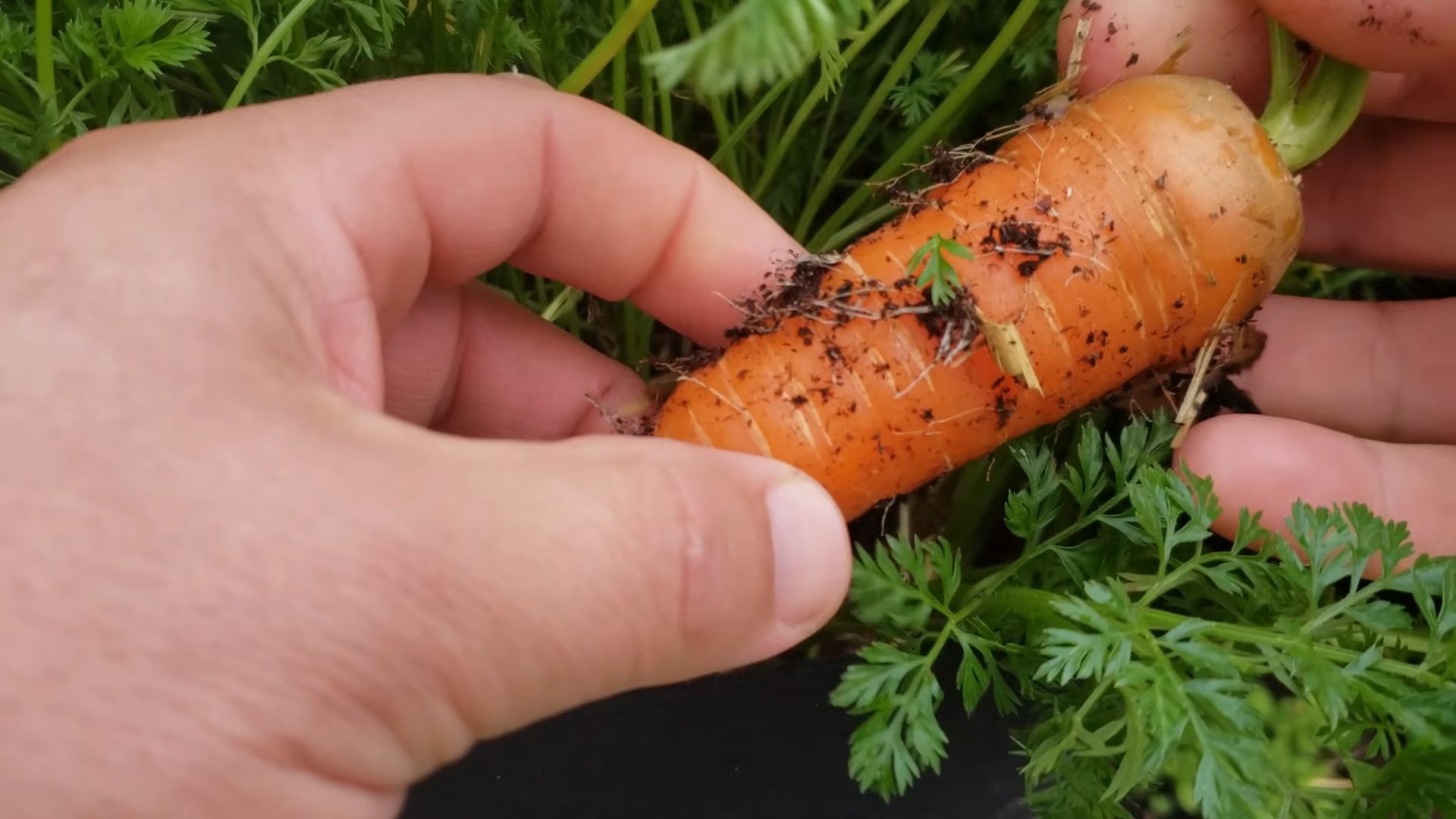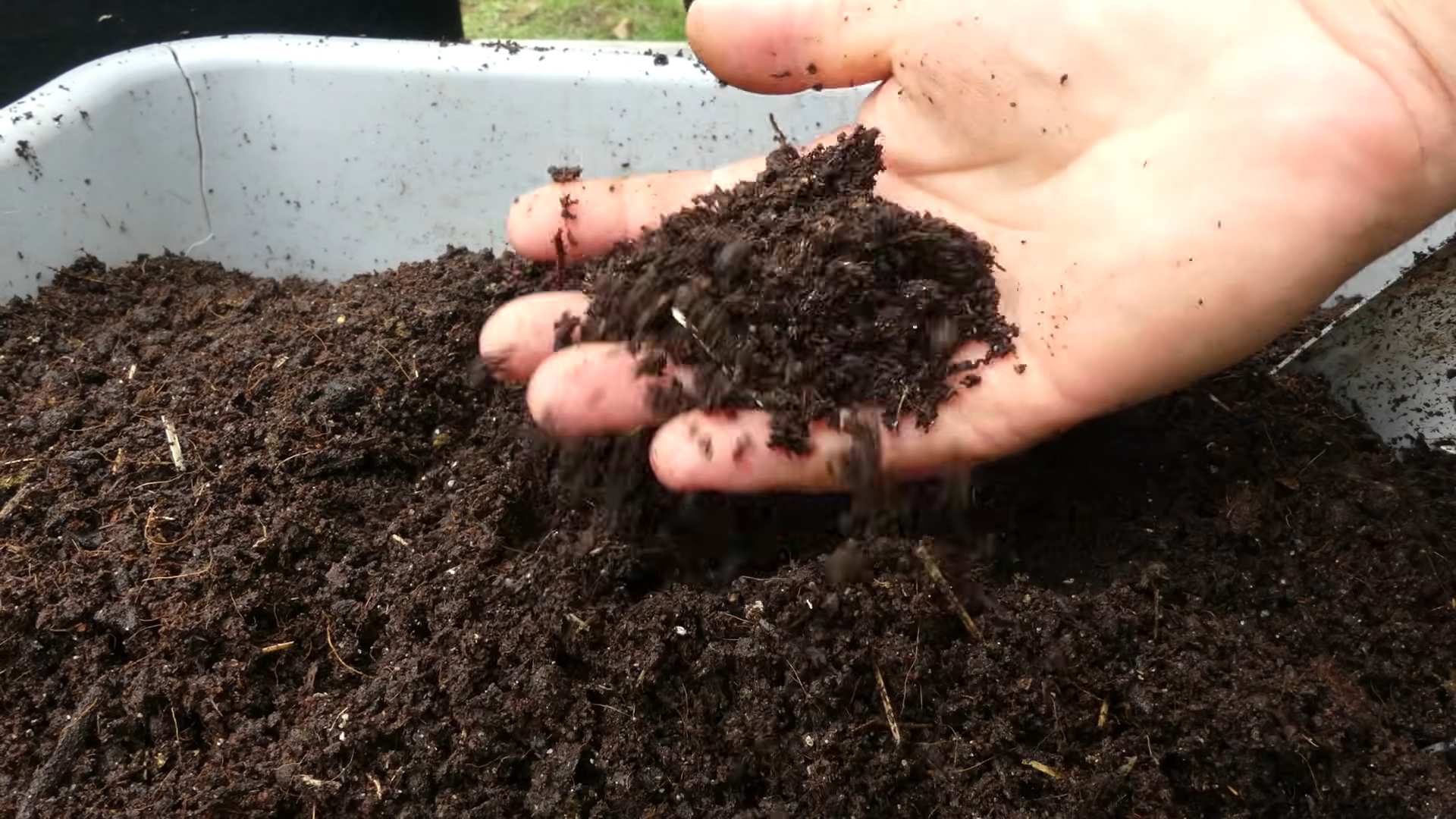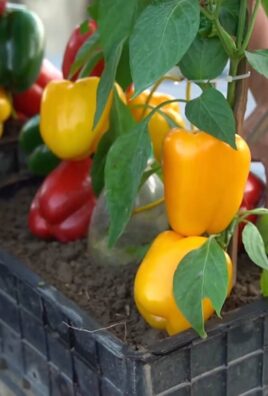Growing Carrots Indoors in Pots might sound like a whimsical dream, especially if you’re short on outdoor space, but trust me, it’s totally achievable! Imagine plucking fresh, sweet carrots right from your windowsill, even in the dead of winter. Forget trekking to the grocery store; your own personal carrot patch is just steps away.
Carrots have a rich history, dating back thousands of years. Originally cultivated for their aromatic leaves and seeds, the vibrant orange root we know and love today is a relatively modern development. Throughout history, carrots have been used for medicinal purposes, culinary delights, and even as a symbol of good luck. Now, you can continue that legacy by bringing this versatile vegetable into your home.
But why bother growing carrots indoors in pots? Well, for starters, it’s incredibly rewarding! There’s something truly special about nurturing a plant from seed to harvest. Plus, it’s a fantastic way to enjoy fresh produce year-round, regardless of your climate or available outdoor space. Many people struggle with poor soil quality or limited sunlight in their gardens, making indoor gardening the perfect solution. This DIY guide will provide you with simple, effective tricks and hacks to ensure your indoor carrot garden thrives. I’m excited to share my tips and tricks to help you get started!

Growing Carrots Indoors: A Step-by-Step Guide to Bountiful Roots!
Okay, so you want to grow carrots indoors? Awesome! I’m here to tell you it’s totally doable, and honestly, super rewarding. Imagine fresh, homegrown carrots right at your fingertips, even when the weather outside is frightful. Let’s get started!
Choosing the Right Carrot Variety
First things first, not all carrots are created equal, especially when it comes to indoor growing. You’ll want to opt for shorter, rounder varieties that don’t need as much space to stretch out. Think about these:
* ‘Thumbelina’: These are tiny, almost golf-ball sized carrots. Perfect for shallow pots!
* ‘Paris Market’: Another round variety, similar to Thumbelina, and just as charming.
* ‘Little Finger’: As the name suggests, these are small and slender, making them a good choice for slightly deeper containers.
* ‘Short n Sweet’: A classic choice for shorter carrots, known for their sweet flavor.
These varieties are your best bet for success indoors. They mature faster and don’t require the deep soil that longer carrot types need.
Gathering Your Supplies
Before we dive into planting, let’s make sure you have everything you need. Trust me, having everything ready beforehand will make the whole process much smoother.
* Pots: This is crucial! Choose pots that are at least 8-12 inches deep, depending on the carrot variety you selected. Remember, good drainage is key, so make sure your pots have drainage holes. Fabric pots are also a great option as they allow for excellent aeration and drainage.
* Potting Mix: Don’t just grab any old soil! Carrots need loose, well-draining soil to grow properly. A mix of potting soil, compost, and perlite or vermiculite is ideal. This combination provides nutrients, drainage, and aeration. Avoid using garden soil, as it can be too heavy and compact.
* Carrot Seeds: Obviously! Make sure you’re getting your seeds from a reputable source. Check the expiration date to ensure they’re still viable.
* Watering Can or Spray Bottle: For gentle watering. You don’t want to blast your delicate seedlings with a strong stream of water.
* Grow Lights (Optional but Recommended): If you don’t have a super sunny spot, grow lights are a lifesaver. They provide consistent light, which is essential for healthy carrot growth.
* Fertilizer (Optional): A balanced liquid fertilizer can give your carrots a boost, but it’s not strictly necessary, especially if you’re using a good quality potting mix with compost.
Planting Your Carrot Seeds
Alright, let’s get our hands dirty! This is the fun part.
1. Prepare Your Pots: Fill your pots with the potting mix, leaving about an inch of space at the top. Gently pat down the soil to remove any large air pockets.
2. Sow the Seeds: Carrot seeds are tiny, so be careful! Sprinkle the seeds evenly over the surface of the soil. Aim for about 2-3 seeds per inch. Don’t worry about being perfect; we’ll thin them out later.
3. Cover the Seeds: Lightly cover the seeds with about 录 inch of soil. You can use your fingers or a small trowel to do this.
4. Water Gently: Use a watering can or spray bottle to gently moisten the soil. Be careful not to wash the seeds away. The soil should be damp but not soggy.
5. Provide Light: Place your pots in a sunny location that receives at least 6 hours of direct sunlight per day. If you don’t have enough natural light, use grow lights. Position the grow lights a few inches above the soil surface.
6. Maintain Moisture: Keep the soil consistently moist but not waterlogged. Check the soil moisture daily and water when the top inch feels dry to the touch.
Caring for Your Carrot Seedlings
Now comes the patience part. It takes about 1-3 weeks for carrot seeds to germinate, so don’t get discouraged if you don’t see anything right away.
1. Thinning: Once your seedlings are about an inch tall, it’s time to thin them out. This is important because it gives the remaining carrots enough space to grow. Snip off the weaker seedlings at the soil line, leaving about 1-2 inches between each plant.
2. Watering: Continue to water regularly, keeping the soil consistently moist. Avoid overwatering, as this can lead to root rot.
3. Fertilizing (Optional): If you choose to fertilize, use a balanced liquid fertilizer diluted to half strength. Apply the fertilizer every 2-3 weeks.
4. Rotating Pots: If you’re growing your carrots near a window, rotate the pots regularly to ensure that all sides of the plants receive equal sunlight. This will prevent them from leaning towards the light.
5. Weed Control: Keep an eye out for weeds and remove them promptly. Weeds can compete with your carrots for nutrients and water.
Dealing with Pests and Diseases
Thankfully, indoor carrots are less susceptible to pests and diseases than those grown outdoors. However, it’s still important to be vigilant.
* Aphids: These tiny pests can suck the sap from your plants. If you see aphids, you can try washing them off with a strong stream of water or using insecticidal soap.
* Fungus Gnats: These small flies are attracted to moist soil. To prevent fungus gnats, avoid overwatering and allow the soil to dry out slightly between waterings. You can also use sticky traps to catch the adults.
* Root Rot: This is a fungal disease that can occur if the soil is too wet. To prevent root rot, make sure your pots have good drainage and avoid overwatering.
If you notice any signs of pests or diseases, address them promptly to prevent them from spreading.
Harvesting Your Carrots
The moment you’ve been waiting for! Carrot maturity varies depending on the variety, but generally, it takes about 50-75 days from planting to harvest.
1. Check for Maturity: Gently brush away some of the soil around the base of the carrots to check their size. They should be the size and shape of the variety you’re growing.
2. Harvest Carefully: To harvest, gently loosen the soil around the carrots with a trowel. Then, carefully pull the carrots out of the soil, holding them by the base of the greens.
3. Wash and Enjoy: Wash your freshly harvested carrots and enjoy them raw, cooked, or juiced!
Troubleshooting Tips
Sometimes, things don’t go exactly as planned. Here are a few common problems and how to fix them:
* Poor Germination: If your seeds aren’t germinating, make sure the soil is consistently moist and that the temperature is warm enough (around 65-75掳F). You can also try soaking the seeds in water for 24 hours before planting.
* Leggy Seedlings: If your seedlings are tall and spindly, they’re not getting enough light. Move them to a sunnier location or use grow lights.
* Small Carrots: If your carrots are small, it could be due to overcrowding, poor soil, or lack of nutrients. Thin your seedlings, use a good quality potting mix, and fertilize regularly.
* Forked Roots: Forked roots can be caused by rocks or other obstructions in the soil. Make sure your potting mix is free of debris.
Extra Tips for Success
* Succession Planting: To enjoy a continuous harvest of carrots, plant a new batch of seeds every few weeks.
* Companion Planting: Plant your carrots with companion plants like radishes, lettuce, or onions. These plants can help deter pests and improve soil health.
* Record Keeping: Keep a record of your planting dates, watering schedule, and any problems you encounter. This will help you learn from your mistakes and improve your success rate in the future.
Growing carrots indoors is a fun and rewarding experience. With a little bit of care and attention, you can enjoy fresh, homegrown carrots all year round. Happy gardening!

Conclusion
So, there you have it! Growing carrots indoors in pots isn’t just a whimsical gardening experiment; it’s a genuinely rewarding and surprisingly accessible way to enjoy fresh, homegrown carrots year-round. We’ve walked through the essential steps, from selecting the right carrot varieties and pots to ensuring optimal soil conditions, lighting, and watering. But why is this DIY trick a must-try?
First and foremost, it grants you unparalleled control over your carrot supply. No more relying solely on grocery store produce, often shipped from afar and lacking that vibrant, just-picked flavor. Imagine the satisfaction of harvesting sweet, crisp carrots from your own indoor garden, knowing exactly where they came from and how they were grown. This is especially valuable if you’re concerned about pesticides or prefer organic gardening practices.
Beyond the taste and control, growing carrots indoors offers a therapeutic and engaging hobby. Tending to your plants, observing their growth, and nurturing them to maturity can be incredibly calming and fulfilling. It’s a fantastic way to connect with nature, even within the confines of your home. Plus, it’s a wonderful educational opportunity for children, teaching them about plant life cycles and the importance of sustainable food practices.
But the benefits don’t stop there. Indoor carrot gardening allows you to extend the growing season, enjoying fresh carrots even during the coldest months. It’s also a great solution for those with limited outdoor space, such as apartment dwellers or city residents. A sunny windowsill or a grow light setup is all you need to embark on this exciting gardening adventure.
Ready to take your indoor carrot growing to the next level? Consider these variations and suggestions:
* Experiment with different carrot varieties: While shorter, round varieties like ‘Thumbelina’ and ‘Paris Market’ are ideal for pots, don’t be afraid to try other types. Just ensure your pots are deep enough to accommodate their root length.
* Companion planting: Enhance your carrot’s growth and deter pests by planting them alongside compatible herbs like rosemary, sage, or thyme.
* Succession planting: Stagger your planting schedule to ensure a continuous harvest of fresh carrots throughout the year. Plant a new batch of seeds every few weeks to keep the supply coming.
* Get creative with your containers: While standard pots work perfectly well, you can also repurpose other containers like buckets, crates, or even old drawers, as long as they have adequate drainage.
* Consider hydroponics: For a more advanced approach, explore hydroponic carrot growing. This soilless method can yield impressive results and offers even greater control over nutrient delivery.
Ultimately, the success of your indoor carrot garden depends on your dedication and willingness to learn. Pay close attention to your plants’ needs, adjust your watering and lighting as necessary, and don’t be discouraged by initial setbacks. Gardening is a journey of continuous learning, and every mistake is an opportunity to improve.
We wholeheartedly encourage you to try this DIY trick and experience the joy of growing your own carrots indoors. It’s a rewarding, sustainable, and delicious way to connect with nature and enjoy fresh produce year-round. And most importantly, don’t forget to share your experiences with us! We’d love to hear about your successes, challenges, and any tips you’ve discovered along the way. Share your photos and stories on social media using #IndoorCarrotGarden and inspire others to embark on this exciting gardening adventure. Happy growing!
Frequently Asked Questions (FAQ)
What are the best carrot varieties to grow indoors in pots?
The best carrot varieties for indoor pot growing are typically shorter, rounder types that don’t require as much depth as longer varieties. Some excellent choices include:
* ‘Thumbelina’: A small, round carrot that matures quickly and is perfect for shallow pots.
* ‘Paris Market’: Another round variety with a sweet flavor and compact size.
* ‘Little Finger’: A slender, finger-sized carrot that’s well-suited for containers.
* ‘ 唳多Π唰嵿 唳忇Θ 唳膏唳囙’: As the name suggests, this variety is short and sweet, making it ideal for indoor growing.
* ‘唳膏唳唳囙Π唳距Σ’: A unique, spiraling carrot that adds visual interest to your garden.
While these are some of the most popular options, you can experiment with other varieties as well. Just be sure to choose pots that are deep enough to accommodate the length of the carrot roots.
How much sunlight do indoor carrots need?
Carrots require at least 6-8 hours of direct sunlight per day to thrive. If you don’t have a sunny windowsill that provides this much light, you’ll need to supplement with artificial grow lights. Full-spectrum LED grow lights are an excellent option, as they provide the necessary wavelengths of light for healthy plant growth. Position the grow lights about 6-12 inches above the plants and keep them on for 14-16 hours per day.
What type of soil is best for growing carrots in pots?
Carrots need well-draining, loose soil to grow properly. Heavy, compacted soil can hinder root development and result in misshapen or stunted carrots. A good potting mix for carrots should be light, airy, and rich in organic matter. You can create your own mix by combining equal parts of:
* Potting soil: Provides a base for the mix and helps retain moisture.
* Compost: Adds nutrients and improves soil structure.
* Sand or perlite: Improves drainage and aeration.
Avoid using garden soil in pots, as it tends to be too heavy and can harbor pests and diseases.
How often should I water my indoor carrots?
Water your carrots regularly, keeping the soil consistently moist but not waterlogged. Overwatering can lead to root rot, while underwatering can cause the carrots to become dry and stunted. Check the soil moisture by sticking your finger about an inch into the soil. If it feels dry, it’s time to water. Water deeply, allowing the excess water to drain out of the bottom of the pot. Reduce watering frequency during cooler months or when the plants are not actively growing.
How long does it take for carrots to grow indoors?
The time it takes for carrots to mature indoors depends on the variety and growing conditions. Generally, you can expect to harvest your carrots in 60-80 days from planting. Shorter varieties like ‘Thumbelina’ may mature faster, while longer varieties may take a bit longer. You can start harvesting carrots when they reach a size that you find desirable.
Do I need to fertilize my indoor carrots?
Yes, carrots benefit from regular fertilization, especially when grown in pots. Use a balanced, water-soluble fertilizer specifically formulated for vegetables. Follow the instructions on the fertilizer package for application rates and frequency. Avoid over-fertilizing, as this can lead to excessive foliage growth at the expense of root development.
How do I prevent pests and diseases in my indoor carrot garden?
While indoor gardens are generally less susceptible to pests and diseases than outdoor gardens, it’s still important to take precautions. Here are some tips:
* Start with clean pots and soil: Use new or sterilized pots and fresh potting mix to avoid introducing pests or diseases.
* Inspect your plants regularly: Check your carrots for signs of pests or diseases, such as aphids, spider mites, or fungal infections.
* Provide good air circulation: Ensure adequate air circulation around your plants to prevent fungal diseases.
* Water properly: Avoid overwatering, as this can create a favorable environment for fungal growth.
* Use organic pest control methods: If you encounter pests, try using organic pest control methods like insecticidal soap or neem oil.
Can I grow carrots indoors year-round?
Yes, you can grow carrots indoors year-round, provided you have adequate lighting and temperature control. Carrots prefer cooler temperatures, so aim to keep the growing environment between 60-70掳F (15-21掳C). If you live in a region with hot summers, you may need to provide shade or air conditioning to keep your carrots from overheating.
How do I know when my carrots are ready to harvest?
You can harvest your carrots when they reach a size that you find desirable. Gently loosen the soil around the carrot and pull it out of the pot. If you’re unsure whether a carrot is ready to harvest, you can carefully dig around the top of the carrot to expose the root and check its size.
What can I do with my homegrown carrots?
The possibilities are endless! You can eat them raw, cooked, or juiced. Use them in salads, soups, stews, or roasted vegetable dishes. You can also pickle or ferment them for a longer shelf life. And of course, you can share them with friends and family!




Leave a Comment